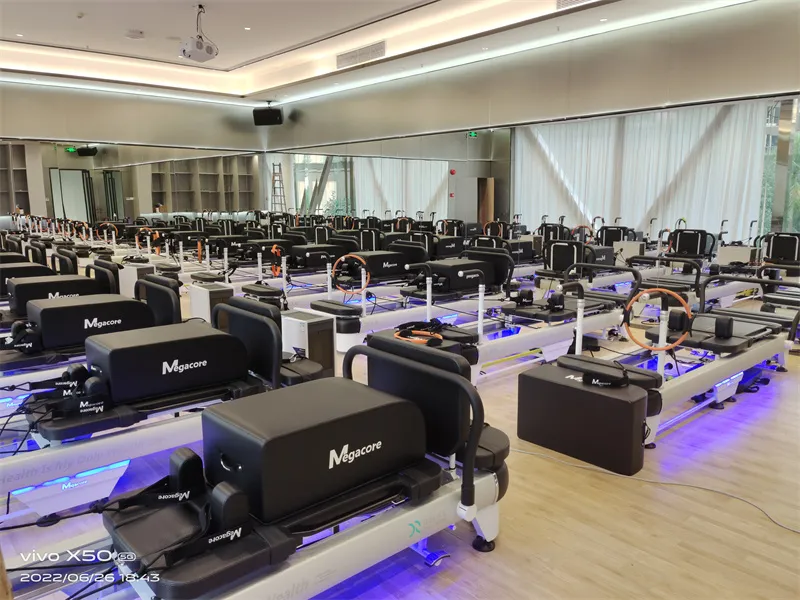With the growing popularity of Pilates, more and more people are opting to open their own Pilates studios. However, selecting the right location for your Pilates studio is not just a business decision; it’s a key factor that will determine the future success or failure of your business. Today, Megacore will provide valuable tips on how to choose the ideal location for your Pilates studio to ensure a successful start.
1. Define Your Target Audience
Before choosing a location, it is essential to know who your target audience is. Pilates primarily attracts health-conscious, middle to high-end individuals, especially women, fitness enthusiasts, and those seeking rehabilitation. Understanding where these people frequent will help you identify areas they are likely to visit. For example, choosing a location near business districts, residential areas, shopping malls, or high-end gyms can increase your studio’s exposure and attract your target clients.
2. Accessibility and Transport
One of the most important factors when choosing a location is accessibility. Pilates classes are usually scheduled at specific times, and clients need to arrive on time. If your studio is far from public transport stations or lacks parking space, clients may choose not to attend. Therefore, choosing a location with easy access and ample parking is crucial. If your studio is located in a city center, it can ensure more potential clients can easily reach you.
3. Competition in the Area
It’s essential to assess the competition in the area when selecting a location. If there are already several established Pilates studios or gyms nearby, it may mean the market demand has been fully met. In this case, you could consider offering unique services or special promotions to attract clients. However, if the area lacks similar fitness facilities, you have the opportunity to fill that gap and attract more customers.
4. Space Layout and Atmosphere
The space design of a Pilates studio should balance functionality and comfort. The space must be large enough to accommodate Pilates equipment such as Reformer, Cadillac, etc., while allowing clients to move freely. Ideally, the studio should have plenty of natural light, good airflow, and maintain a calm, comfortable atmosphere, enabling clients to relax and focus on their practice. Therefore, when choosing a location, consider the height of the space, floor hardness (for equipment use), and climate control systems.
5. Foot Traffic and Consumer Spending
You need to assess the foot traffic in your target area. City centers usually have high foot traffic, but rental costs are also higher. If your budget is limited, you can choose areas with moderate foot traffic, such as local neighborhoods or commercial complexes, and align your pricing strategy with the area’s average consumer spending. Remember that the cost of the area should match the pricing of your Pilates classes to prevent potential clients from being deterred by price.
6. Space for Additional Services
With the diversification of the fitness industry, a Pilates studio is no longer just a place for training but a comprehensive wellness experience space. You can consider offering additional services such as fitness assessments, nutrition counseling, or rehabilitation therapy. These extra services can enhance customer loyalty and attract more target groups. When choosing a location, consider whether there is enough space to offer these expanded services, which can improve the overall attractiveness of your studio.
7. Brand Image and Marketing
When selecting a location, you must also focus on building your brand image. The area should reflect your studio’s brand positioning. If you’re targeting the high-end market, you could choose an artistic area or creative park, which will enhance your brand image. If you’re aiming for a more budget-friendly approach, consider selecting a location with high foot traffic and moderate rent, using marketing activities to attract more clients.
8. Legal and Lease Agreements
During the selection process, be sure to understand local leasing policies and regulations. Some areas may have specific rules for fitness businesses, involving health and safety standards or equipment use. Make sure the lease agreement is clear, and rental terms are reasonable to avoid unnecessary legal disputes during operations
Conclusione
Choosing the right location is the first step toward a successful Pilates studio. By carefully analyzing your target audience, accessibility, competition in the area, and regional consumer spending, combined with space design and brand image, you can select the ideal location and create a comfortable yet professional training environment for your clients. Megacore believes that with these detailed plans and efforts, your Pilates studio will stand out in the market and attract more loyal customers.

